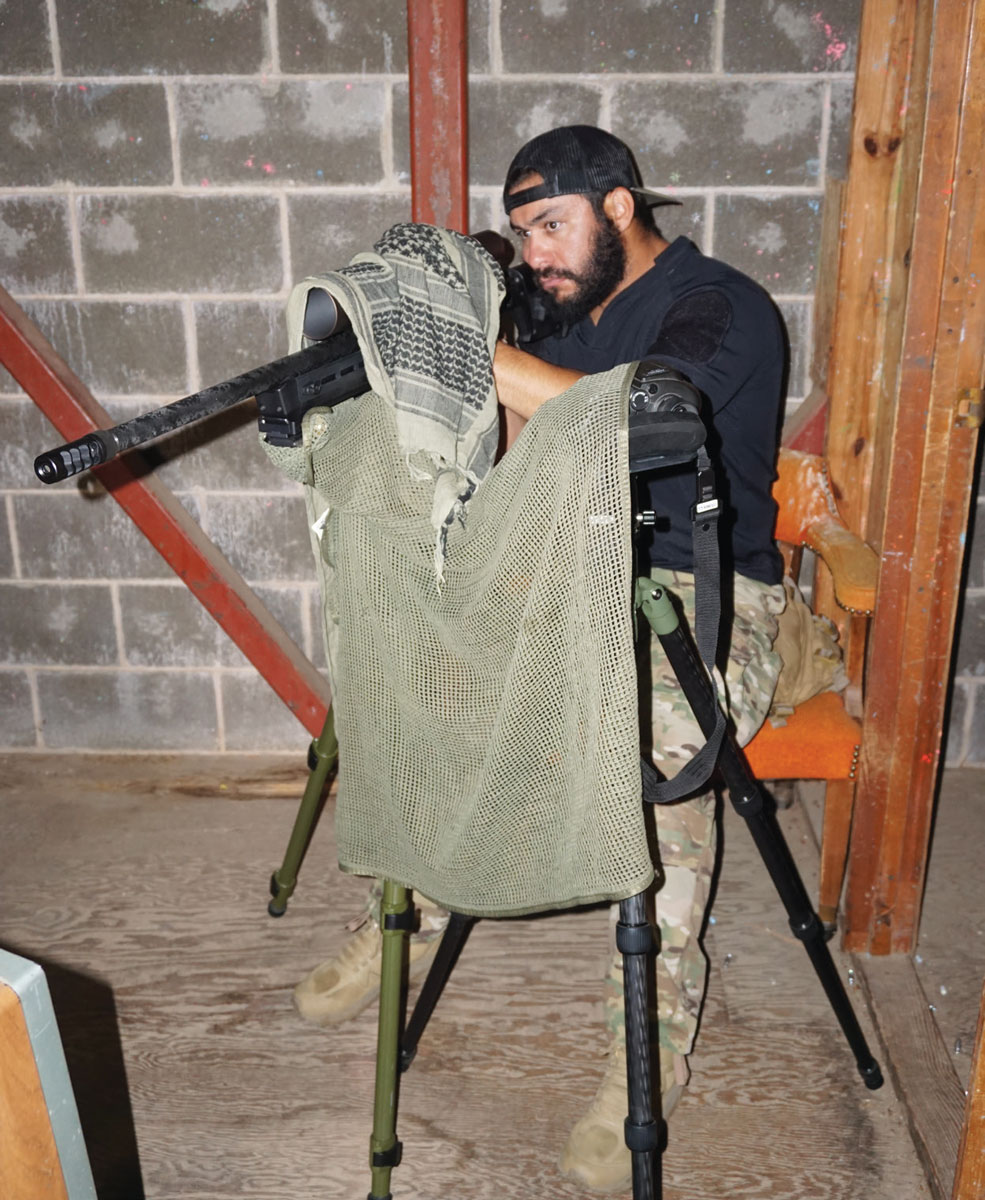Special Weapons and Tactics, commonly known as SWAT, are highly-trained experts in their chosen fi eld of work. But what exactly does that mean? Often people hear myths, rumors, and common stereotypes about the SWAT team, but many officers never get the opportunity to see the behind scenes and the real work that goes on. In addition to handling a variety of high-risk incidents in the fi eld, San Antonio SWAT performs unit training and assists with training for other departmental units including Patrol, SAFFE, Street Crimes, Covert and the Training Academy. SWAT also works and trains with outside local agencies to enhance their partnerships, network, and knowledgebase.
Most officers know that there are a variety of jobs and specialties within the SWAT team. This article will shed some light on the secretly coveted and potentially highly misunderstood positions of the SWAT snipers. In December, the San Antonio SWAT Team held a Basic Sniper Course. The purpose of this course was to identify current SWAT members to fi ll future sniper vacancies, familiarize new SWAT supervisors with SOP’s and capabilities of the team snipers, and to educate partner units and outside agencies on sniper duties and tactics. The participants included new SWAT team members, a new SWAT supervisor, two SAPD fi rearms instructors, two Bexar County SWAT officers, and two lead instructors with the Texas DPS Aircraft Division. The DPS instructors are responsible for teaching their department’s Aerial Use of Force program and were able to teach a block of instruction during the class that provided invaluable familiarization with Aerial Platform Use of Force considerations.

Perhaps one of the most common myths about snipers is that they are experts at long range precision shooting from comfortable prone positions, taking as much time as they need to get the shot right the first time. There is far more to sniper duties and skill than meets the eye. During this course, students were able to scratch the surface of this skill set. The class covered the following basic skills that snipers must use on every deployment: rifle and equipment selection, fundamentals of precision marksmanship, scope theory, range estimation, hide construction, and camouflage techniques.
In addition to these complex principles, snipers must build their skills with the rifle in positional shooting and are often placed in uncomfortable shooting positions. For this reason, students were also taught supported and unsupported shooting positions, position building, and low light shooting.
All of these are individual skills that must be honed and practiced in order to build the skill set so that a sniper is able to operate in any condition. These skills that allow the sniper to make an accurate shot require extensive and precise knowledge of internal, external, and terminal ballistics. As a sniper, these officers must know exactly how each and every bullet will act from the moment it is fi red in the rifle to the external flight path, as well as the terminal effect that it will have upon impact.
The Basic Sniper Course pushes students both physically and mentally. In order to pass the San Antonio SWAT Basic Sniper Course, students must pass a qualification that begins at 300 yards. The qualification requires students to sprint and engage in positional shooting, all with very small margins of error. Once a student passes the qualification, they then must pass “The Standards.” “The Standards” are a series of precision shots made under the pressure of a PAC timer and other stress factors that force the students to make critical decisions and shots in a matter of seconds. The combination of these two stringent tasks has caused some students in previous classes to fail. Fortunately for this class, they proved to be the exception and all students passed. Congratulations!
